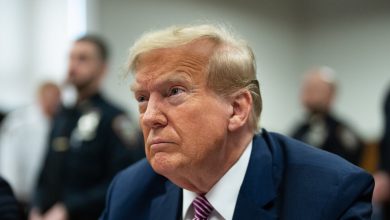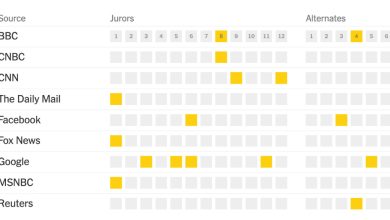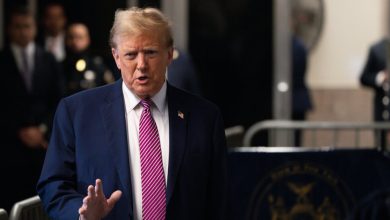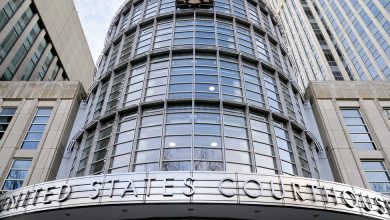Stakes Change, but an Old Fight Over a Chunk of South America Flares Again
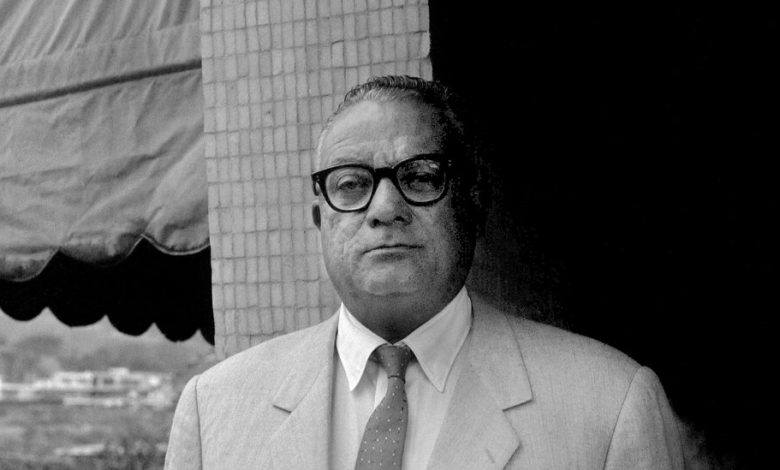
It was the depths of the Cold War in the 1960s, and Caracas was on edge.
Marxist guerrillas in Venezuela were getting weapons and training from Cuba’s Fidel Castro. Along Venezuela’s eastern border, anticolonial leaders in what was then British Guiana were agitating for independence.
Alarmed that a Guyanese leader could create a Cuban beachhead in South America, Venezuela’s staunchly anti-Communist president, Rómulo Betancourt, came up with a strategy, which blunted the independence push: At the United Nations, his government resurrected a long-festering claim to more than half of Guyana’s territory.
Now the dispute over Essequibo — an oil-rich, Guyanese region nearly the size of Florida — has flared back to life. This month, Venezuela’s president, Nicolás Maduro, unveiled new maps displaying it as part of Venezuela, nominated an Army general as its governor and offered Venezuelan identity cards to people living in the sparsely-populated region.
Venezuela’s revival of the claim lays bare how much has changed in this part of South America since the Cold War — and how much, despite the passage of time, remains the same.
The fight against communism aligned Mr. Betancourt with Washington in the 1960s, when Venezuela was a democratic oasis in a region falling to military dictatorships.
Now Venezuela is ruled by a socialist authoritarian government allied with Cuba and Iran. The country, reeling from an economic collapse that has produced a migrant exodus to the United States, has become a thorn in Washington’s side.
Guyana, long one of South America’s poorest countries, today boasts one of the fastest-growing economies in the world.
Huge discoveries in Essequibo by the American oil giant ExxonMobil are turning the small country into a global energy powerhouse with skyrocketing oil production.
By contrast, Venezuela’s once-booming oil industry has been hobbled by mismanagement, sanctions and crumbling infrastructure.
Guyana “will very soon be producing more oil than Venezuela,” said Phil Gunson, an analyst with the International Crisis Group who has lived in Caracas for more than two decades.
“Think about what that’s going to do for the geopolitics of South America, when Guyana is like a second Qatar,” he added, referring to the small country on the Arabian Peninsula that has used energy wealth to raise its global standing.
Essequibo’s vast natural resources factor into the territorial dispute — Venezuela’s government has ramped up denunciations of ExxonMobil, while moving to start its own bidding process for oil leases in Guyanese territory that Venezuela does not even control.
As tensions simmer, the United States is increasing its military cooperation with Guyana with the aim of improving the English-speaking country’s “military readiness and capabilities to respond to security threats.”

President Irfaan Ali of Guyana, left, and President Nicolas Maduro of Venezuela. Credit…Keno Georgefederico Parra/Agence France-Presse — Getty Images
So far, actual clashes between Venezuela, with some 150,000 active military personnel according to C.I.A. estimates, and Guyana, with only about 3,000, seem unlikely. Political analysts in Venezuela argue that Mr. Maduro is largely using the dispute to rally support ahead of elections next year.
Mr. Maduro met with his Guyanese counterpart, President Irfaan Ali, last week in St. Vincent and the Grenadines. They shook hands, and agreed not to use force and to meet again. But Mr. Maduro maintained the territorial claim.
John Kirby, a spokesman for the U.S. National Security Council, said American officials were following the dispute “very, very closely” and made clear the administration believed that an 1899 agreement establishing the current boundary between Venezuela and British Guiana “should be respected.’’
“We don’t want to see this come to blows,” he told reporters this month.
The tensions are also complicating the Biden administration’s efforts to thaw relations with Venezuela. The United States recently lifted sanctions on Venezuela’s oil industry in a bid to improve the country’s battered economy. And on Wednesday the Biden administration announced the release of a Maduro ally indicted in a bribery scheme in exchange for the release of U.S. citizens held in Venezuelan jails.
But Mr. Maduro’s revival of the territorial dispute is sparking calls to reimpose sanctions.
“When President Biden gave him an inch, President Maduro took a mile,” said Sen. Roger Wicker of Mississippi, the top Republican on the Senate Armed Services Committee. “And with no accountability, he is taking more.”
As the Biden administration faces pressure in Washington, the dispute, and the renewed involvement of the United States, are stirring ghosts from the time when Guyana was still a British colony, and Venezuela was saber-rattling over a swath of its land.
“Ironically, the dispute in the headlines today has its origins in Venezuela’s anti-communism of the 1960s,” said Tamanisha J. John, a Guyanese scholar of Black politics at York University in Toronto.
When Venezuela made claims to Guyana’s territory during the Cold War, the United States publicly sought to maintain its distance, contending — as the State Department does now — that the differences between the two countries should be discussed in legal bodies.
But behind the scenes, the United States was every bit as concerned as Venezuela that Cheddi Jagan, a U.S.-educated dentist who was premier of British Guiana and was viewed by some as a radical leftist, could wield power after Guyana gained independence.
The C.I.A. conducted covert actions in Guyana aimed at diminishing Mr. Jagan’s chances, including secretly financing labor strikes, and lifting those of his adversary, Forbes Burnham, according to declassified documents obtained by the National Security Archive, a research institute at George Washington University.
At one point in 1964, the C.I.A. discussed a proposed coup to topple Mr. Jagan’s government, in which he and his wife were to be “kidnapped and hidden in Venezuela,” according to a C.I.A. cable.
In the end, the C.I.A. stuck with its covert campaign, working with British intelligence agents to ensure that Mr. Burnham, viewed as more pliant to U.S. interests, would be Guyana’s leader.
After Guyana finally obtained independence in 1966 with Mr. Burnham at its helm, Washington’s satisfaction with this outcome was short-lived. He drifted to the left and presided over an authoritarian government, embracing his own version of socialism and remaining in power until his death in 1985.
In 1969, a secessionist uprising in Guyana called the Rupununi Rebellion failed, prompting claims that Venezuela was trying to foment unrest in the newly independent country.
The territorial dispute then went largely dormant until 1982, when another Venezuelan president, Luis Herrera Campíns, facing flagging popularity ahead of an election, revived it.
Under Hugo Chávez, the leader of Venezuela’s socialist-inspired revolution, the country’s policy toward Guyana softened considerably. Mr. Chávez visited Guyana in 2004, and Venezuela exported subsidized oil to Guyana in exchange for Guyanese rice.
Mr. Chávez even asserted the long-held tenet in Guyana that the United States had pressured Venezuela to use the territorial claim to counter Mr. Jagan, and later against Mr. Burnham.
Still, Mr. Chávez never withdrew Venezuela’s claim, reflecting how ingrained the issue remains in the country, where books abound about the Essequibo dispute.
“It doesn’t matter who’s in power in Venezuela,” said Jan Mangal, a former petroleum adviser to Guyana’s previous president, David Granger. “Essequibo will always be a political football they will use.”
The dispute dates back two centuries, and in 1899 a tribunal in Paris established the internationally recognized border. But a letter from one of Venezuela’s lawyers at that tribunal, published in 1949, suggested the result was void because it involved a secret deal between Britain and Russia.
In Venezuela, opponents of Mr. Maduro have also seized on the territorial claim. María Corina Machado, who was recently elected in a primary to challenge Mr. Maduro for the presidency next year, made a trip by canoe in 2013 to the region in dispute in an effort to advance Venezuela’s claim.
Mr. Maduro, taking up the issue with full force, organized a referendum last month on the territorial dispute. The government reported that more than 95 percent of voters supported the claim, though observers said turnout was far lower than expected.
Afterward, Venezuela’s top prosecutor accused several top opposition figures of treason and ordered their arrest, saying they had taken money from ExxonMobil to sabotage the referendum. ExxonMobil could not immediately be reached for comment.
For its part, Guyana, with a population of only about 800,000, is quickly raising its profile because of its management of Essequibo’s resources. Venezuela, with about 28 million people, currently produces around 800,000 barrels of oil a day, about twice as much as Guyana. But Guyana’s output is forecast to surge to 1.2 million barrels a day, according to the International Energy Agency.
Swimming in oil, though, doesn’t provide much comfort as the dispute casts a pall.
Fay DeYoung, 63, a Guyanese co-owner of a lakeside recreational site in Essequibo, said she would evacuate rather than live under Venezuelan control.
“We already made up our minds, if we have to go, we have to go,” she said. “We’ll just have to leave everything and go and run.”
Anselm Gibbs contributed reporting from Guyana and Isayen Herrera from Venezuela.

